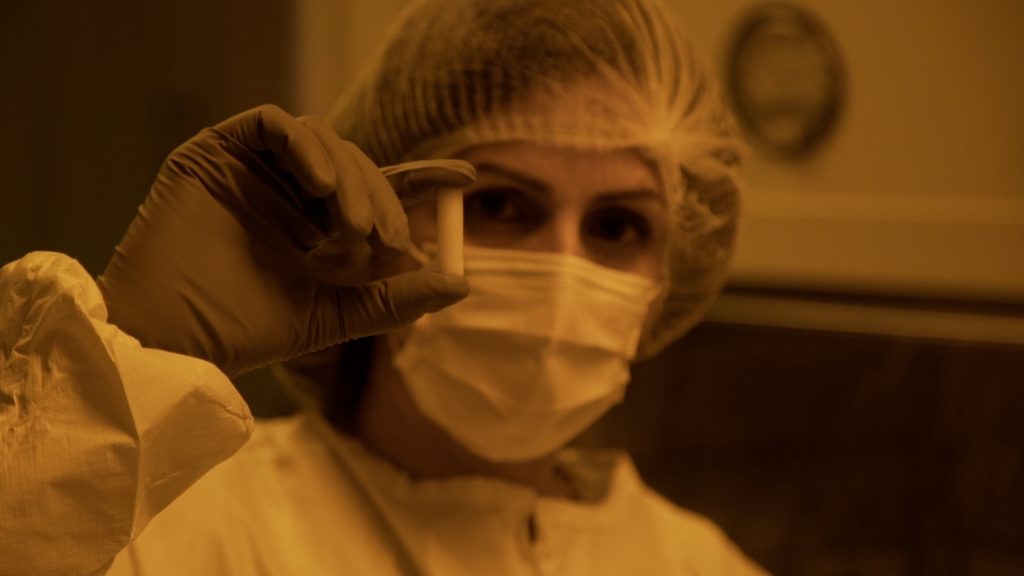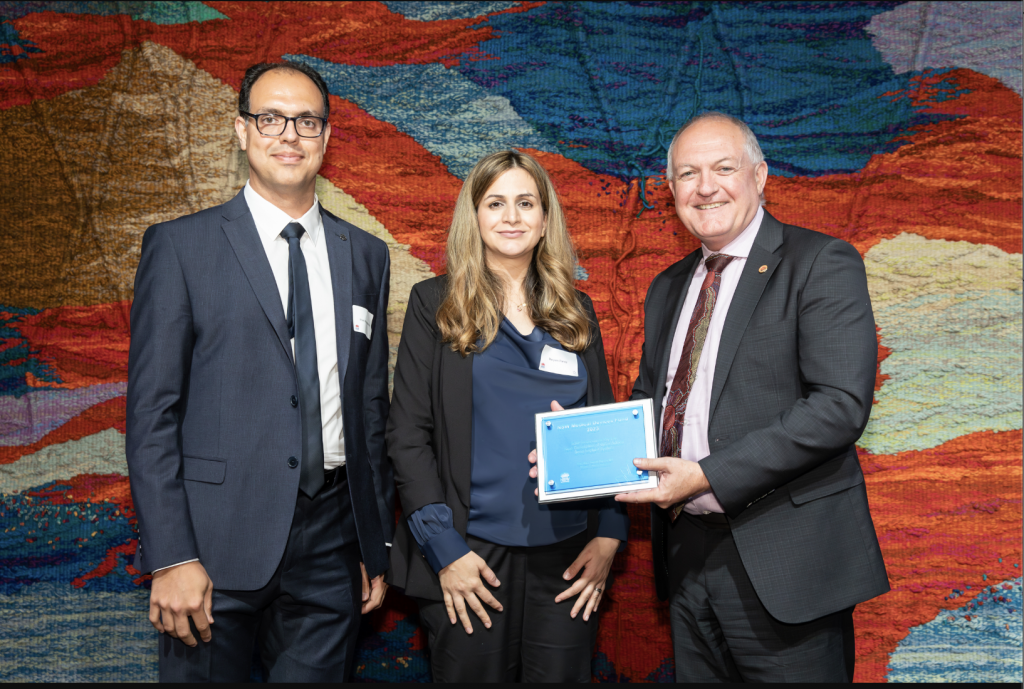Healing fractured bones with novel new gen implants
Repairing bone fractures promises to be less painful, less expensive and cause fewer complications with these novel bone scaffolds and implants that stimulate new cell growth and dissolve, leaving no residue.
When we think of broken bones, we picture someone in a plaster cast, just like Jimmy Stewart’s famous character in the classic Hitchcock film, Rear Window. Yet, bone scaffolding materials, implanted at the site of certain fractures, are also extremely important, encouraging stability and bone regrowth. Now, with support from NSW Health, a next generation implant called JAZBI™, is set to completely change the landscape of bone fracture treatment and repair. A safe, adaptable, novel form of bone filler, the product closely resembles the composition of real bone. It also stimulates bone regeneration before naturally biodegrading, to be harmlessly absorbed by the body.
On track for commercialisation success
JAZBI™ is the brainchild of medical technology company, SDIP Innovations (which stands for Safe Degradable Implant Platform). The company was recently awarded a grant from the NSW Health Medical Devices Fund (MDF), via the Office for Health and Medical Research. This is the second time SDIP has been an MDF recipient – accepting their first grant in 2020-2021. Both company Co-Founders are graduates of the NSW Health funded Commercialisation Training Program. In 2018, also through NSW Health, SDIP received an International Commercialisation Scholarship. This enabled the Co-Founders to spend two years at the QB3-UCSF Rosenman Institute, a medical devices incubator at the University of California in San Francisco.
“The first NSW Health MDF grant helped us complete the clinical studies required for approval from regulatory bodies, while other training helped us ensure that we secured worldwide Intellectual Property protection,” says Biomedical Engineer, Dr Maryam Parviz, SDIP Co-Founder and CEO. “The current MDF funding will enable us to continue commercialising JAZBI™ and expand our manufacturing capability in NSW. We are extremely grateful for this support, which has been invaluable to the research, clinical and business development phases of creating and trialling this technology.”
The technology is of critical importance, given that global figures show a 33.4% increase in bone fractures, since 1990. One significant reason for this spike is that we are living longer. Our ageing population is at risk of falls and is also more affected by conditions such as osteoporosis, which can make bones more brittle and prone to fracture.

Mimicking the composition of bone
JAZBI™ novel bone implants contain a highly porous matrix made of polymers – a synthetic material consisting of one small molecule that is repeated in a chain. “They are made from a highly specialized polymer structure that has very small pores that imitate the architecture of real bone,” Parviz explains. “This scaffolding is reinforced with natural polymer fillers.” The end result is a bone implant that mimics natural bone structure and encourages bone remodelling in order to heal fractures. “The implant restores the broken bone, and replaces the original bone, which can lead to a better long-term experience for the patient,” Parviz adds.
By contrast, metallic implants can cause pain after insertion, often require revision surgery, and in young patients, may also interfere with bone growth. “Unfortunately, metal implants often need to be removed when the bone is healed, resulting in a public health cost that can run to billions of dollars each year,” Parviz explains. This retrieval surgery also results in additional hospital stays and surgery risks, such as infection. “It can cause minor damage and even that small hole after a metal implant is removed, can reduce the bone’s strength by 20%-50%,” Parviz adds. This very problem was one of the catalysts for first developing the bone implants. Back in 2016, SDIP Co-Founder and Chief Scientific Officer, Dr Iman Manavitehrani, was working as a postdoctoral scientist at Westmead Children’s Hospital. While there, he saw first-hand how children and families experience anxiety and pain due to repeat surgeries to upsize a child’s implants. This inspired him to start working on JAZBI™ bioresorbable technology and develop a collaborative partnership and company with Parviz.
Treating bone injuries from any cause
Bone trauma affects all age groups and occurs most often in the forearm, upper arm, leg, wrist, hip, spine and ribs. It is usually caused by sports injuries, falls, or accidents involving cars or bikes. In athletes, overuse and repetitive motion can place stress on a bone, causing a fracture. Risk of a bone injury is higher in people with conditions such as osteoporosis and diseases such as cancer. Fractures can also be a side effect of medications such as corticosteroids, prescribed to treat issues such as rheumatoid arthritis. SDIP Innovation’s pre-shaped bone implants can potentially be used to treat fractures from any of these causes. They are manufactured in different configurations including wedges, cubes, granules and rods and are designed to fit into the gaps caused by the break, to help the bone strengthen and regenerate as it heals.
For more complex cases, such as tumour removal, where the bone defect is unpredictable, the implant offers a new solution. The company provides surgeons with a kit that contains a special dispensing device and a variety of implant shapes and sizes. The surgeon can then innovate during the surgery, to fully shape the implant to meet the patient’s specific bone issue.

Encouraging new bone growth
As scaffolding products have evolved, there has been increased focus on creating a new generation of implants that are regenerative and bioresorbable. This means that the scaffolding material may be infused with special bioactive agents. These stimulate bone generation, to encourage bone cells to regrow to heal the fracture. The implants are then naturally absorbed by the body.
“Unfortunately, around 90% of bioresorbable bone implants are still partially intact after three years,” says Parviz. “Over time complications such as cysts and inflammation may occur if the metal implants start to break into pieces or move.”
By comparison, studies indicate that JAZBI™ is fully broken down by the body, which means it leaves no residue behind.
The benefits of biodegradable bone scaffolding
This new scaffolding technology will help lessen surgery time and lower hospital costs. “The JAZBI™ Delivery Kit aims to provide patient-specific filler in less than three minutes, which can potentially reduce surgery time by 15 to 20 minutes, and remove a huge burden from the health care system,” Parviz explains. The device softens the filler so it can be easily moulded into the bone defect, and within a matter of minutes, it hardens to strengthen and fortify the bone.
“Our vision is to develop safe and natural implants that enable surgeons greater control and the ability to customise the bone fillers in real time in the operating room to precisely match the patient’s unique needs,” Parviz points out. This is a win-win for both patients and their specialists.
Updated 3 months ago
